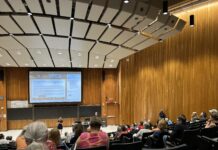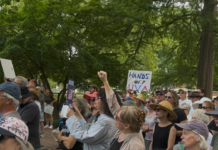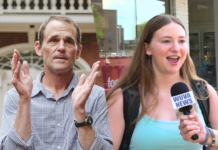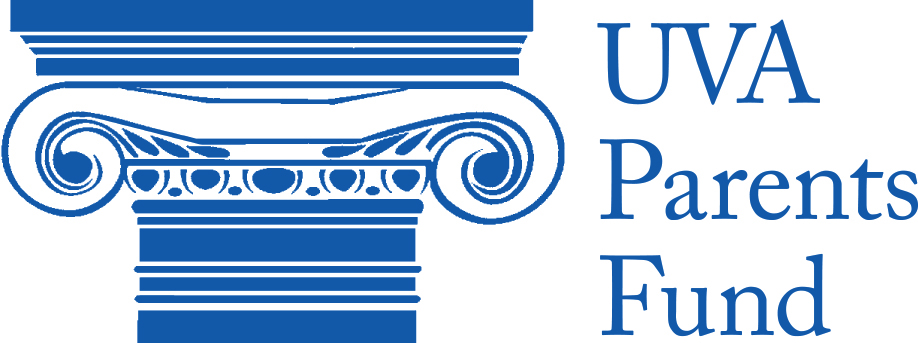On Wednesday, The Batten Global Policy Center hosted a panel in honor of International Education Week that focused on the peace process in Colombia. The panel included fourth years Esteban Santos, Isabela Medina Mate, Maria Dominguez, and Professor of History and Latin American History Herbert ‘Tico’ Braun, all of whom have direct ties to Colombia. The panel discussed the many opportunities of the peace process and the challenges that arise from the project from the perspective of public policy.
The Colombian peace process is the negotiation of peace between the Colombian government and the Revolutionary Armed Forces of Colombia (FARC) after five decades of fighting. On October 2, 2016, Colombia narrowly voted against the peace referendum by securing 50.21% of the votes.
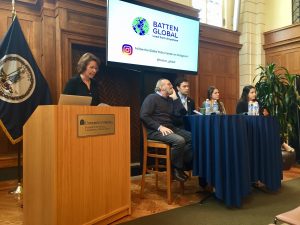 The conflict originally started over political and economic conflict in the rural areas starting in the 1940s and 1950s. In the period of 1958-1962, some rural people began developing liberal and Communist ideals in the midst of the Cold War and tried to bolster themselves internationally with other Communist countries in attempts to secure rural reforms. They asked the Colombian government for a small committee to come out to these rural areas and hear their grievances. The government and the Catholic Church responded by bombing them. From this, these rural people moved away from the afflicted areas, collected slightly more people, and started to gain a little more power. Guerilla groups soon formed afterwards, which did little to improve relations; their actions led both rural folk and urban Colombians to consider the group as more of terrorist organization, given their power.
The conflict originally started over political and economic conflict in the rural areas starting in the 1940s and 1950s. In the period of 1958-1962, some rural people began developing liberal and Communist ideals in the midst of the Cold War and tried to bolster themselves internationally with other Communist countries in attempts to secure rural reforms. They asked the Colombian government for a small committee to come out to these rural areas and hear their grievances. The government and the Catholic Church responded by bombing them. From this, these rural people moved away from the afflicted areas, collected slightly more people, and started to gain a little more power. Guerilla groups soon formed afterwards, which did little to improve relations; their actions led both rural folk and urban Colombians to consider the group as more of terrorist organization, given their power.
The guerillas and the government came up with an extraordinary peace agreement, which Professor Braun says is “probably the most sophisticated peace agreement that came out of these wars.” The peace agreement entails six points entailing ruler reform, political participation, a handle on drug trafficking, victims of transitional justice, disarmament, demobilization, and reintegration into society, and the implementation of the agreement as a whole.
However, Braun continued to note that the peace agreement was probably too sophisticated because it was too inclusive. One example of this is the guerillas insisted on the peace agreement including a certain language about gender that made some, especially the Catholic Church, believe the agreement would make the Colombians homosexual. However, Braun says this has nothing to do with the peace process.
The panel was quick to note that most Colombians are in favor of the peace agreement, regardless of how they voted. Those that voted against the agreement were surprised that they won and many regretted it. Those that voted yes voted so because they wanted the conflict to end.
The panel commented that many were just incredibly misinformed about the agreement. The Catholic Church understood the agreement as a way to turn Colombians into homosexuals. There were many lies in general being spread about the 297 page treaty including those that told the rich that Colombia would take their land under the treaty and those that told the poor that Colombia would take their money.
While the vote did not turn out as many had expected, there are still some positive outcomes. The government was able to prove that it is a democratic society and that it is willing to listen to their people. From a public policy perspective, the cease-fire has been reduced significantly as well. The United States has also been involved with the peace agreement so it is seen as a diplomatic victory for the U.S.
Despite the conflicts in Colombia, Tico Braun pointed out that many forget that Colombia has had just as much resolutions as it has had conflicts. It is a “nation of conflicts and conciliation,” so there is confidence that Colombia can eventually end the conflicts once and for all.







